Events
Apr 9, 3 PM - Apr 10, 12 PM
Code the Future with AI and connect with Java peers and experts at JDConf 2025.
Register NowThis browser is no longer supported.
Upgrade to Microsoft Edge to take advantage of the latest features, security updates, and technical support.
In this article, you learn how to integrate Visibly with Microsoft Entra ID. When you integrate Visibly with Microsoft Entra ID, you can:
The scenario outlined in this article assumes that you already have the following prerequisites:
In this article, you configure and test Microsoft Entra SSO in a test environment.
To configure the integration of Visibly into Microsoft Entra ID, you need to add Visibly from the gallery to your list of managed SaaS apps.
Alternatively, you can also use the Enterprise App Configuration Wizard. In this wizard, you can add an application to your tenant, add users/groups to the app, assign roles, and walk through the SSO configuration as well. Learn more about Microsoft 365 wizards.
Configure and test Microsoft Entra SSO with Visibly using a test user called B.Simon. For SSO to work, you need to establish a link relationship between a Microsoft Entra user and the related user in Visibly.
To configure and test Microsoft Entra SSO with Visibly, perform the following steps:
Follow these steps to enable Microsoft Entra SSO.
Sign in to the Microsoft Entra admin center as at least a Cloud Application Administrator.
Browse to Identity > Applications > Enterprise applications > Visibly > Single sign-on.
On the Select a single sign-on method page, select SAML.
On the Set up single sign-on with SAML page, select the pencil icon for Basic SAML Configuration to edit the settings.
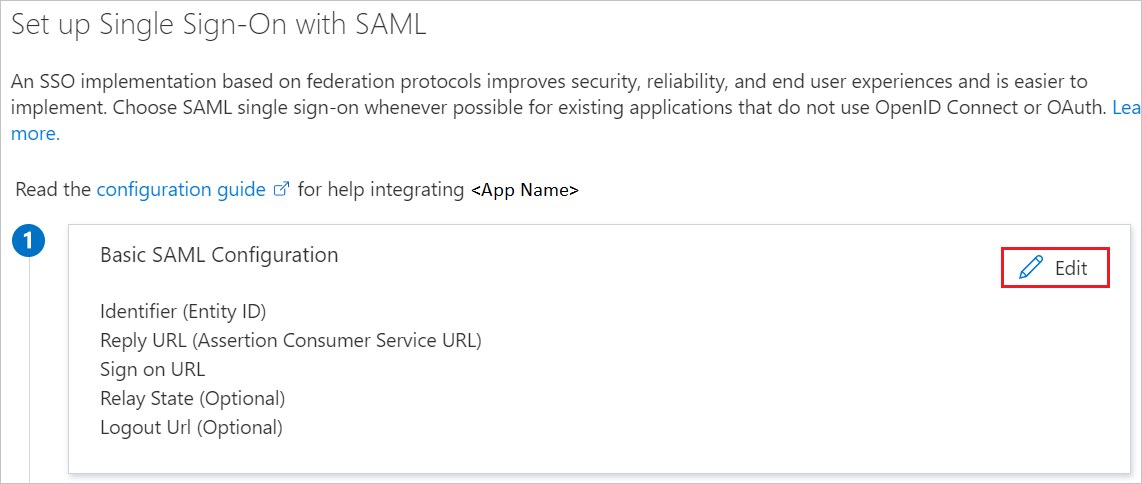
On the Basic SAML Configuration section, enter the values for the following fields:
a. In the Sign-on URL text box, type the URL:
https://app.visibly.io/
b. In the Reply URL text box, type the URL: https://api.visibly.io/api/v1/verifyResponse
Visibly application expects the SAML assertions in a specific format, which requires you to add custom attribute mappings to your SAML token attributes configuration. The following screenshot shows the list of default attributes.

In addition to above, Visibly application expects few more attributes to be passed back in SAML response which are shown below. These attributes are also pre populated but you can review them as per your requirements.
| Name | Source Attribute |
|---|---|
| city | user.city |
| lastName | user.surname |
| state | user.state |
| department | user.department |
| user.mail |
On the Set up single sign-on with SAML page, in the SAML Signing Certificate section, find Certificate (Base64) and select Download to download the certificate and save it on your computer.

On the Set up Visibly section, copy the appropriate URL(s) based on your requirement.

Follow the guidelines in the create and assign a user account quickstart to create a test user account called B.Simon.
Sign in to Visibly using your credentials.
Navigate to the Settings option from the navigation menu.
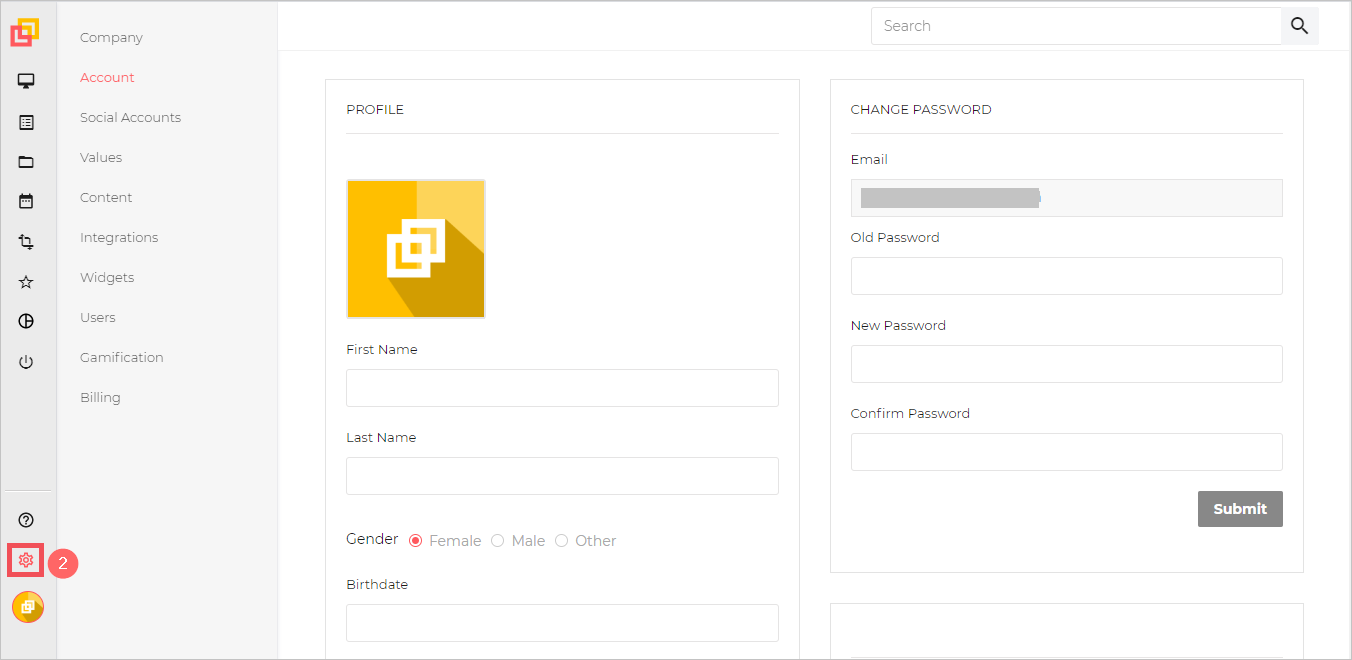
Select Integrations within Settings.
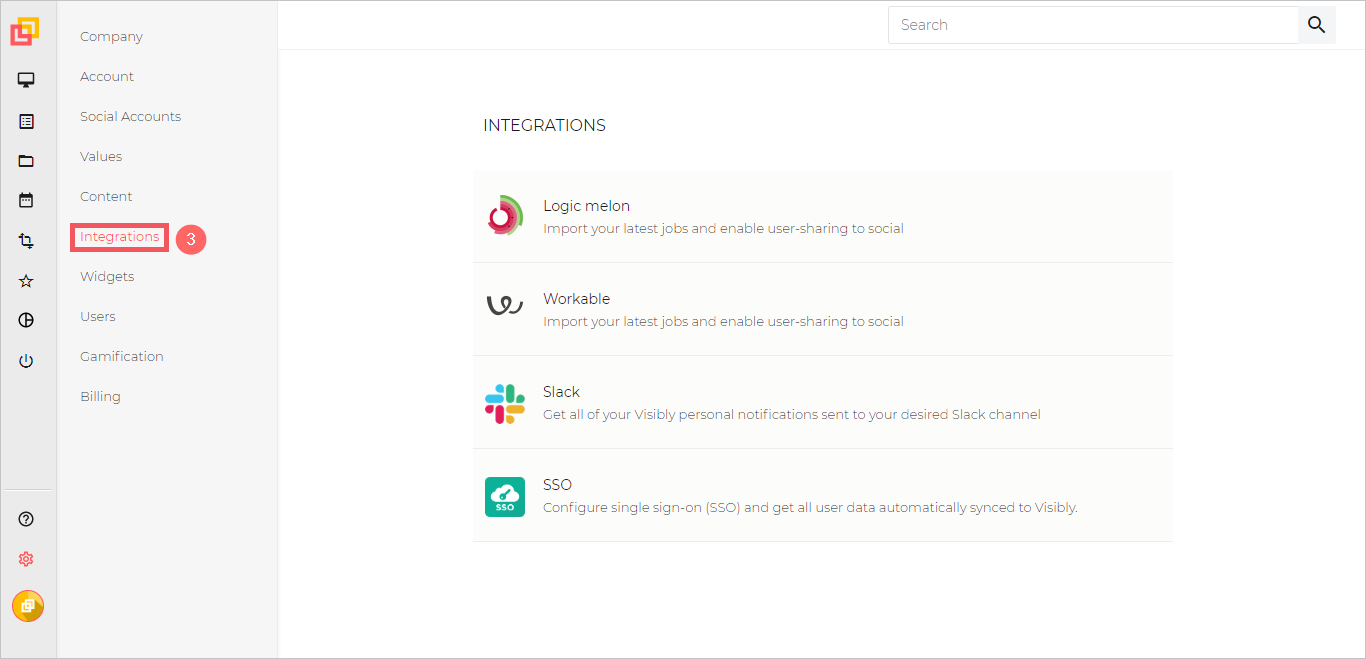
In the Integrations, select SSO.
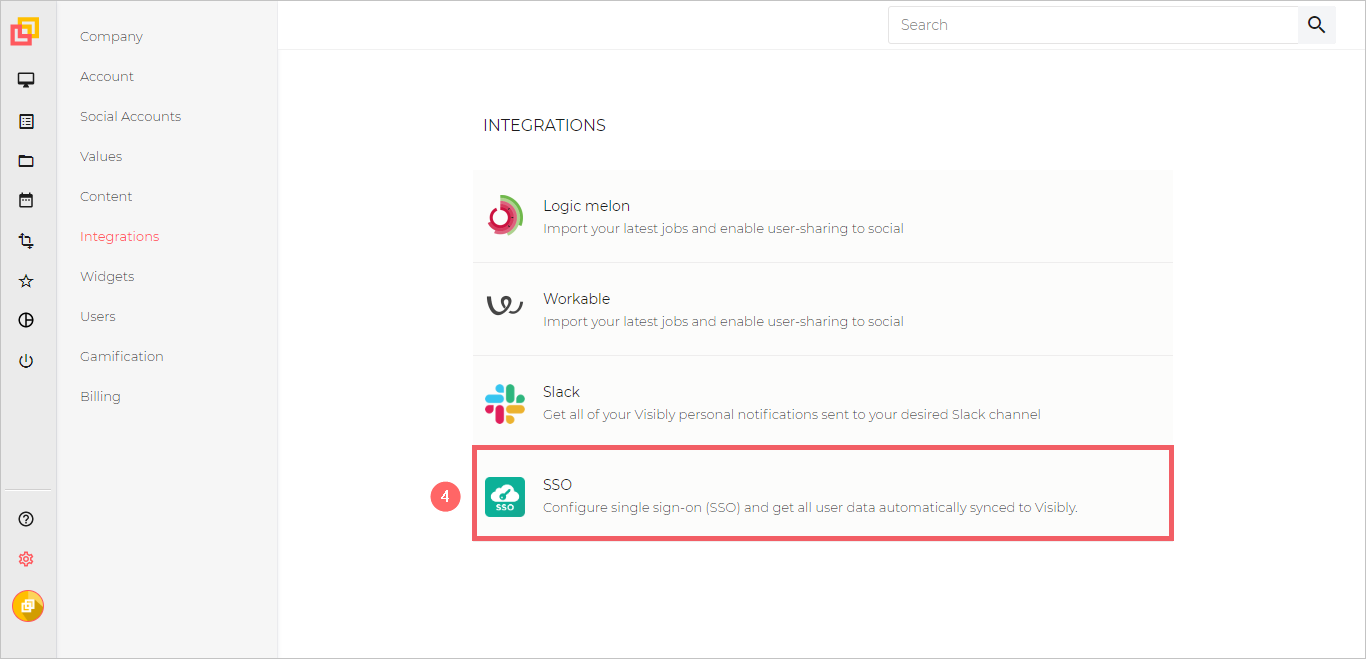
Perform the following steps in the following page.
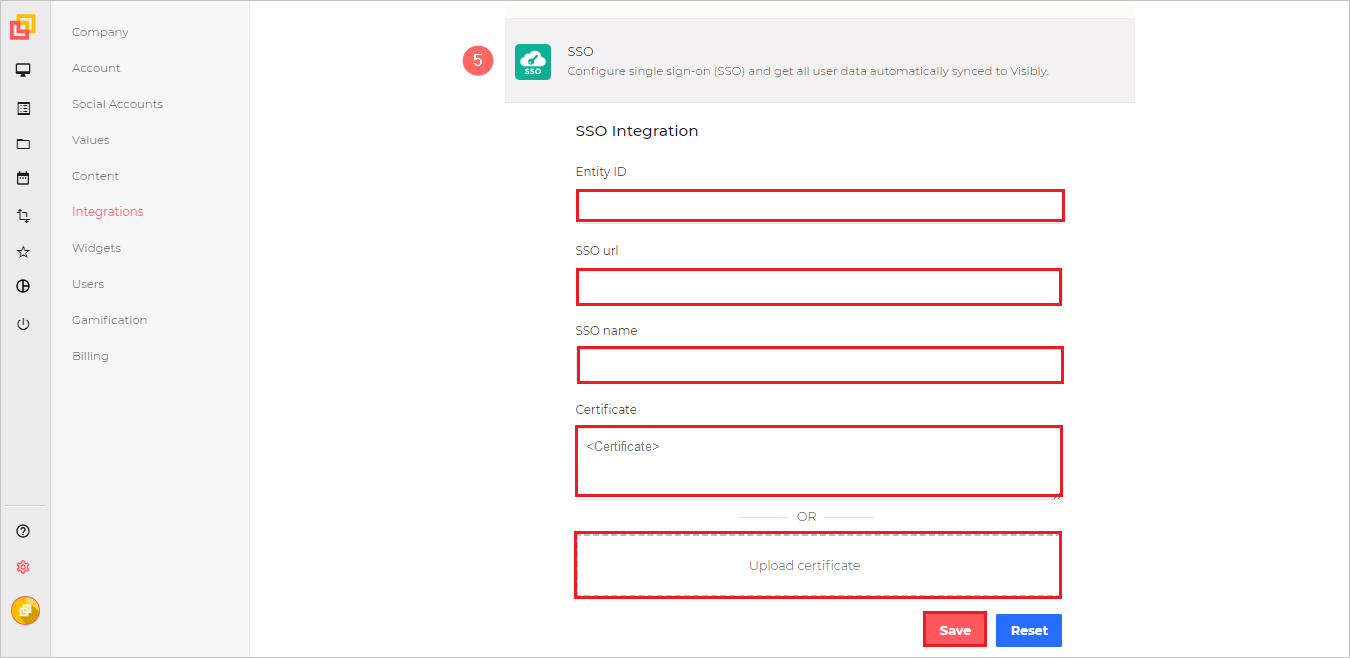
a. In the Entity ID textbox, paste the Entity ID value which you copied previously.
b. In the SSO url textbox, paste the Login URL value which you copied previously.
c. In the SSO name textbox, give any valid name.
d. Open the downloaded Certificate (Base64) into Notepad and paste the content into the Certificate textbox or you can also upload the Certificate by selecting the Upload Certificate.
e. Select Save.
In this section, a user called B.Simon is created in Visibly. Visibly supports just-in-time user provisioning, which is enabled by default. There's no action item for you in this section. If a user doesn't already exist in Visibly, a new one is created after authentication.
Visibly also supports automatic user provisioning, you can find more details here on how to configure automatic user provisioning.
In this section, you test your Microsoft Entra single sign-on configuration with following options.
Select Test this application in Azure portal. this option redirects to Visibly Sign-on URL where you can initiate the login flow.
Go to Visibly Sign-on URL directly and initiate the login flow from there.
You can use Microsoft My Apps. When you select the Visibly tile in the My Apps, this option redirects to Visibly Sign-on URL. For more information, see Microsoft Entra My Apps.
Once you configure Visibly you can enforce session control, which protects exfiltration and infiltration of your organization’s sensitive data in real time. Session control extends from Conditional Access. Learn how to enforce session control with Microsoft Defender for Cloud Apps.
Events
Apr 9, 3 PM - Apr 10, 12 PM
Code the Future with AI and connect with Java peers and experts at JDConf 2025.
Register Now